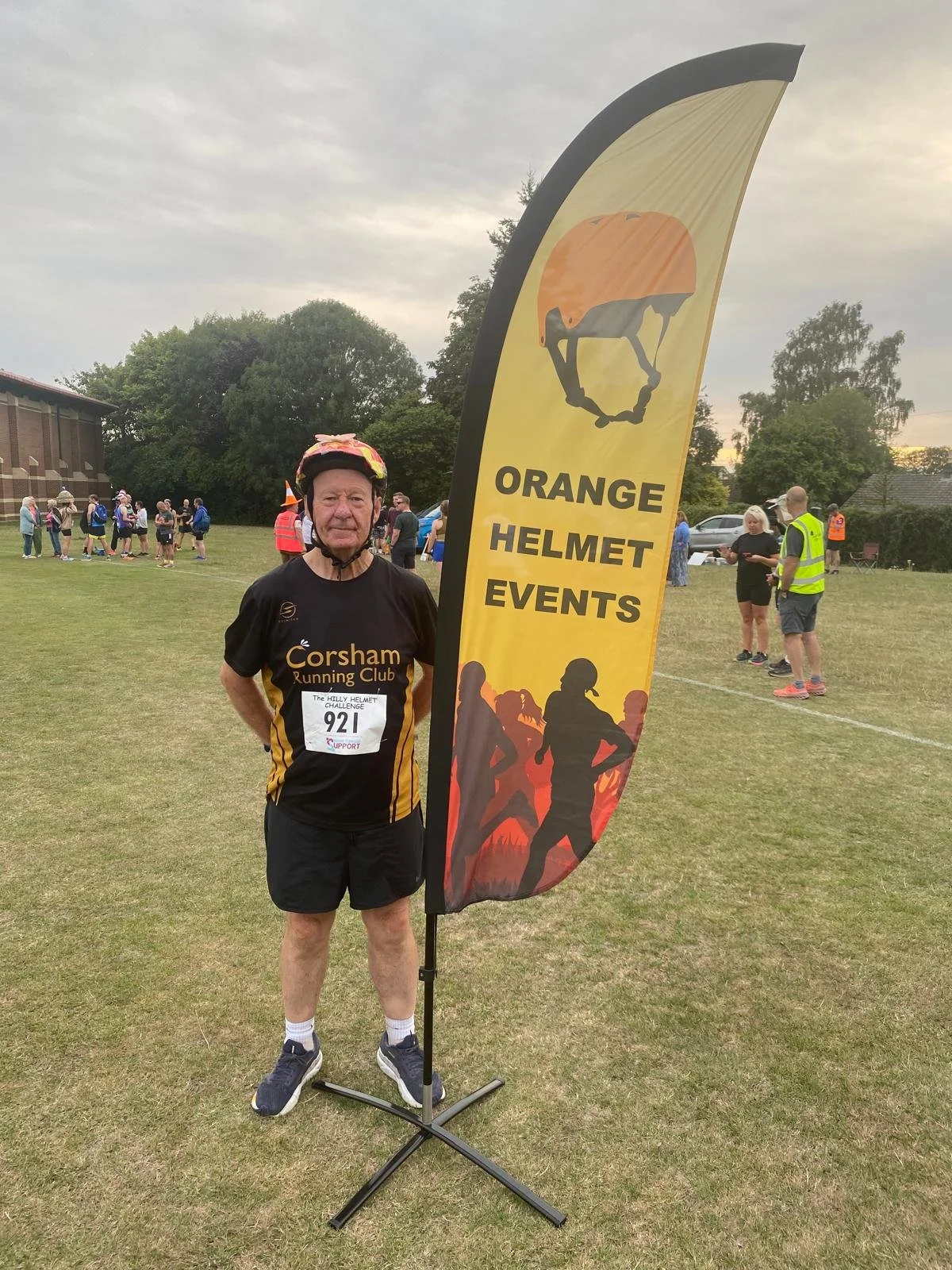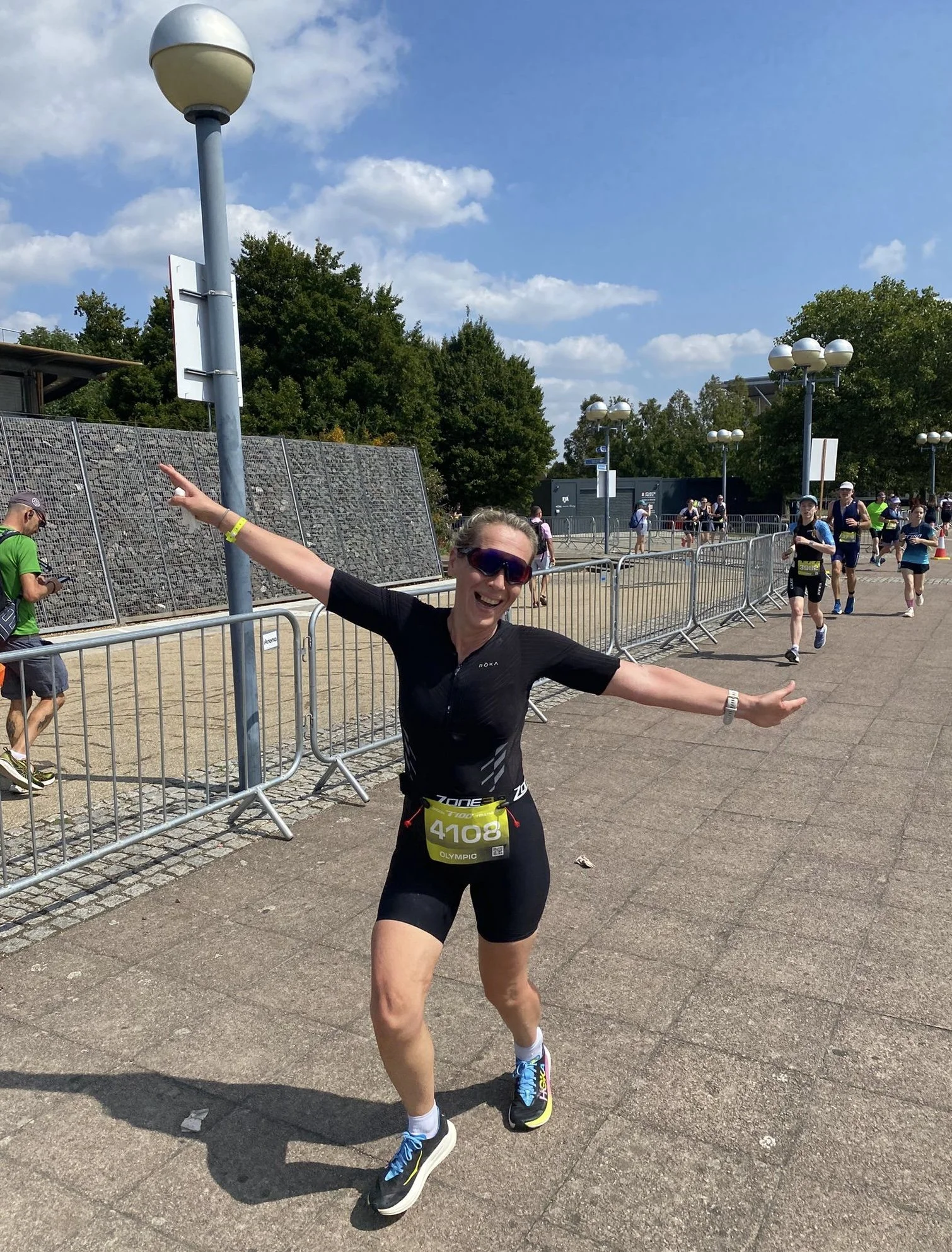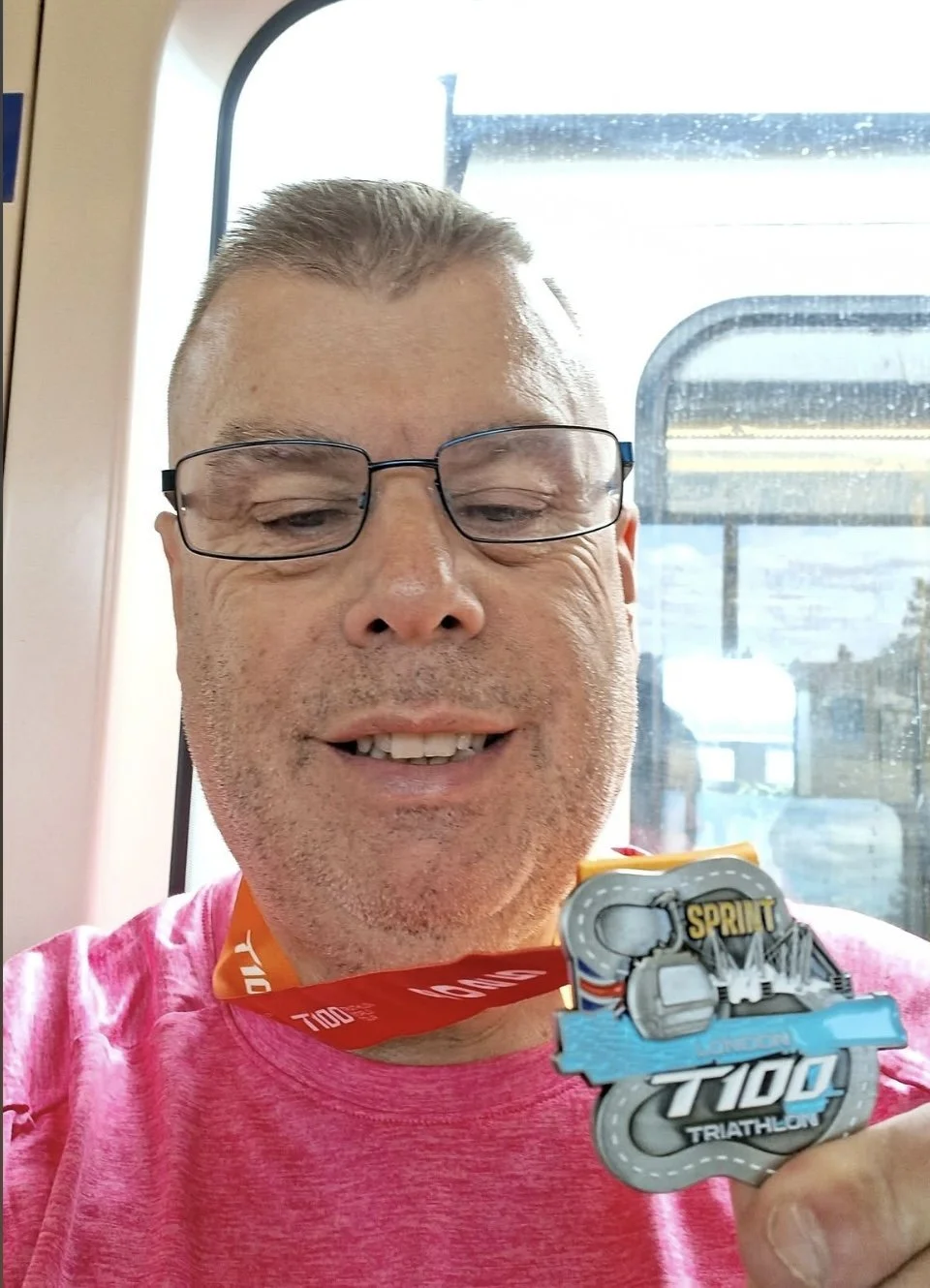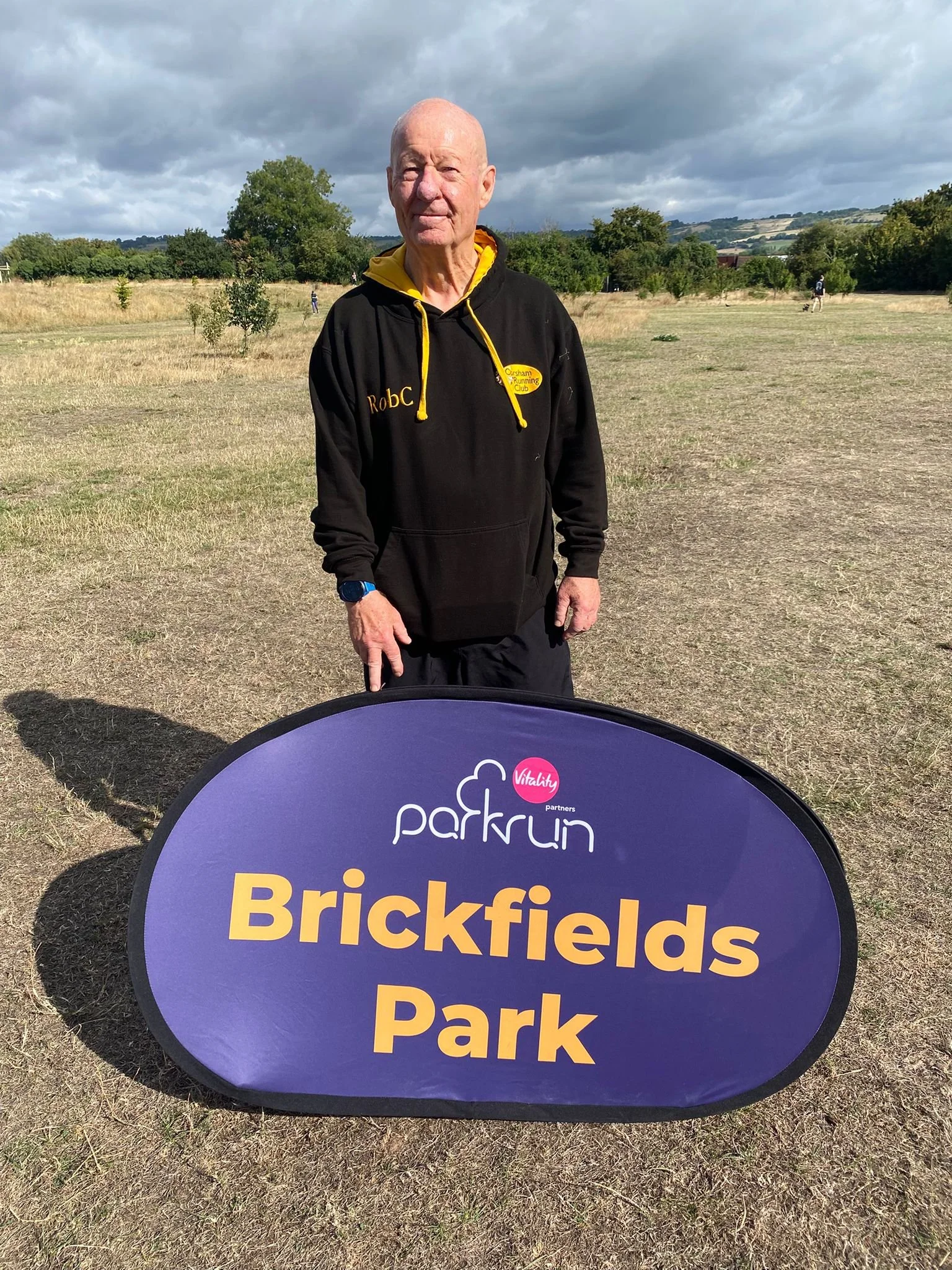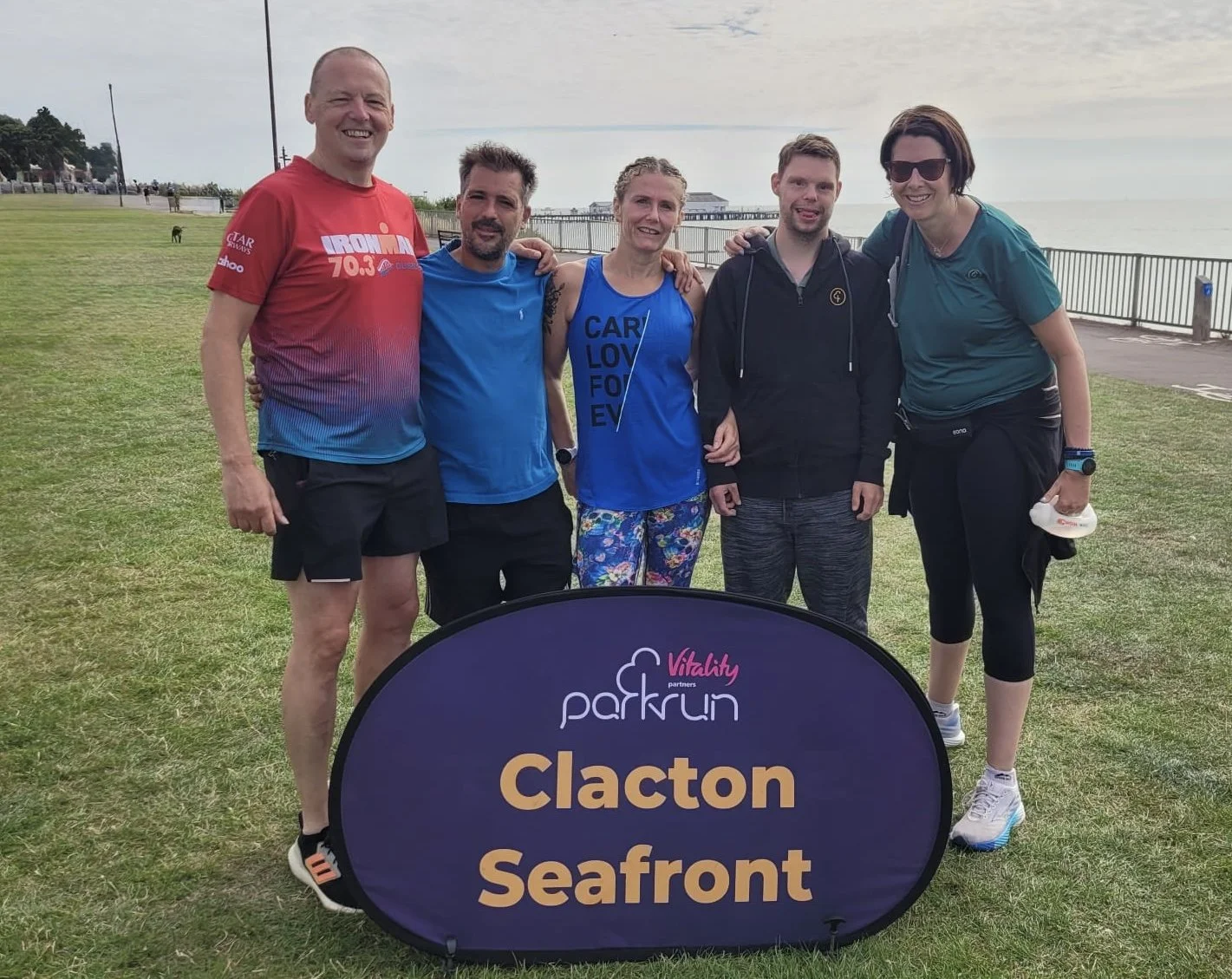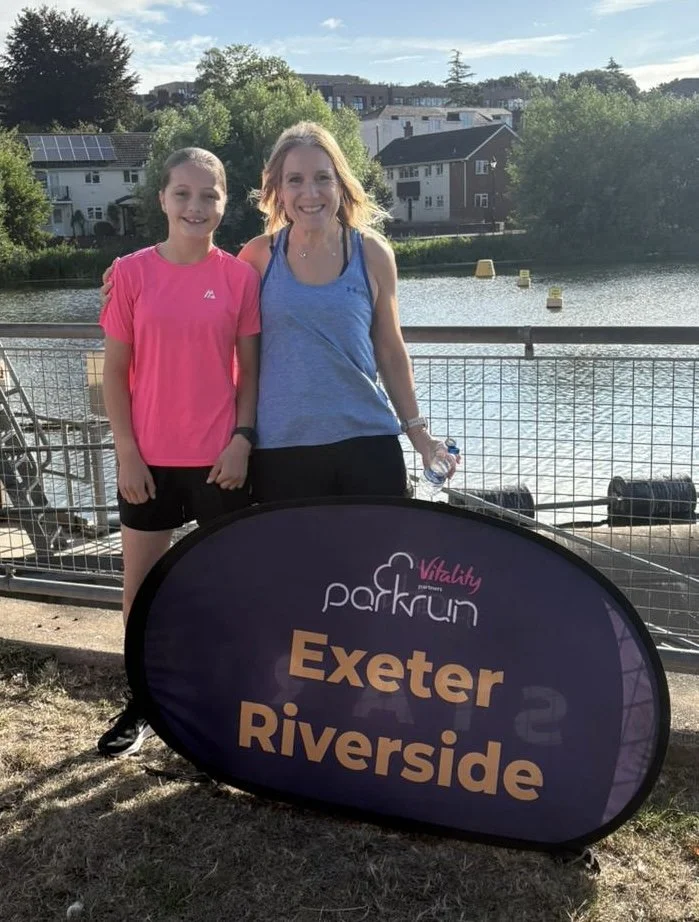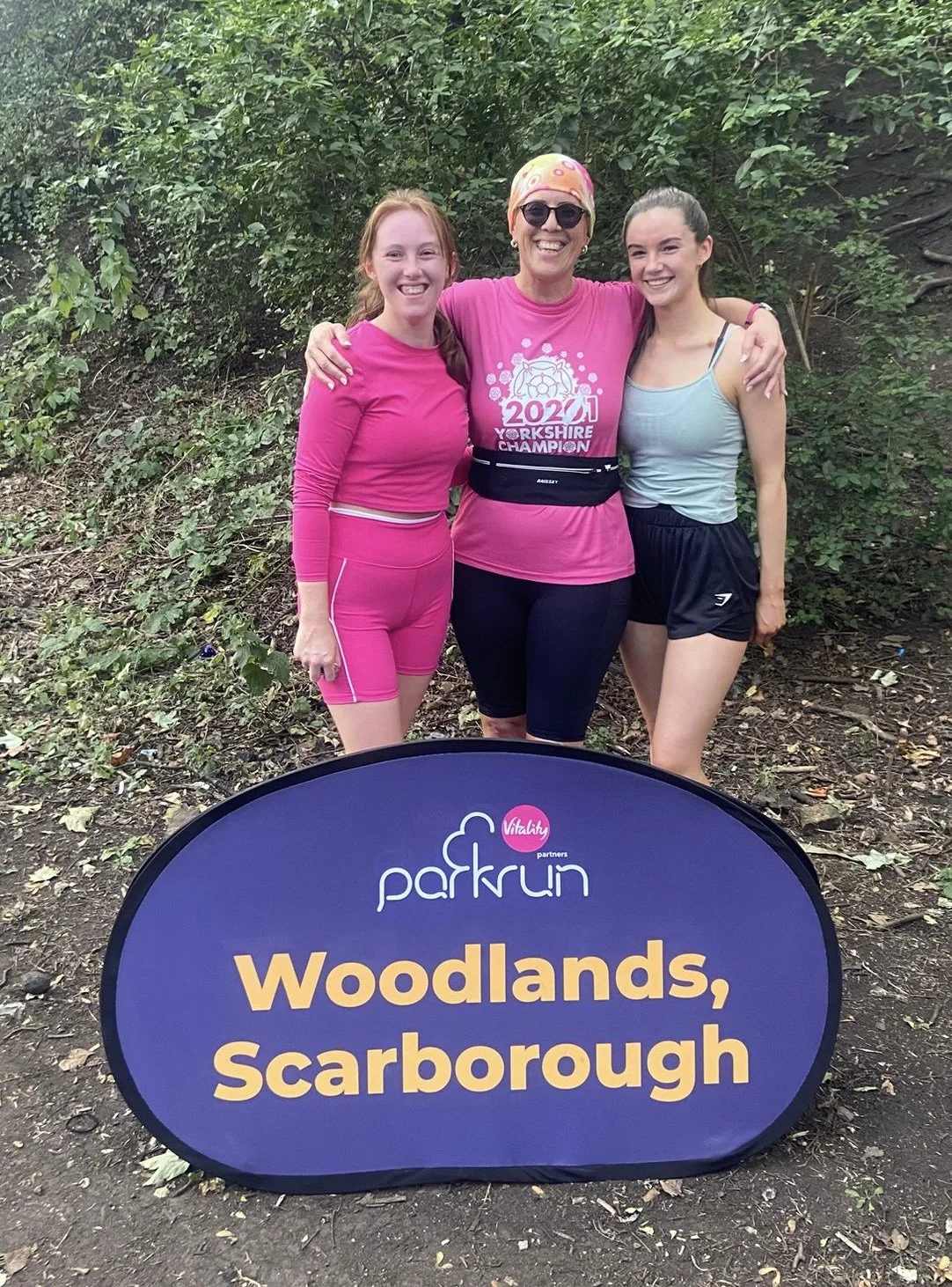BRR Blog – 11 August 2025
Mark New, winner of Handicap #06
Howdie Road Runners!
It’s that time of year when I always feel sorry for children. No sooner do they break up from school than all the adverts for school uniforms start. Give them a break! At least this week they will be getting a bit of decent weather. It may be a bit warm for running over the next few days, but make the most of it; it probably won’t last for long, and the days are already getting noticeably shorter. We’ll be needing the new floodlights at track soon (subtle reminder that track is closed again this Tuesday for the floodlight replacement work. Back as normal the following week).
Artifical Antics
AI, or artificial intelligence, is getting a huge amount of media coverage at the moment. To jump on the bandwagon, I thought I would ask the AI we use at work, CoPilot, to liven up the text on the front page of the Barking Road Runners website. To make it a bit more fun, I asked CoPilot to produce different drafts using different emotions. Here is the first one. Can you guess the emotion here? Answer at the bottom of the blog:
Original text:
“Barking Road Runners, established in 1984, is a friendly running club in Barking, East London, with about 120 members of all abilities aged 18 to 78. Whether you're a beginner, looking to get fitter, or a seasoned runner, you're welcome to join us. Keep reading to find out more or contact us by clicking here.”
AI version:
“Barking Road Runners, if you can believe it, has been slogging along in Barking, East London since 1984 — yes, somehow still existing with about 120 members ranging from 18 to 78. Whether you’re just starting out or you’re already exhausted by running and life in general, you’re apparently welcome to join. Curious for more? Keep reading, or—if you must—contact us. Honestly, don’t say you weren’t warned.”
The ankle bone’s connected to the…
There seem to be a few members with foot/ankle problems at the moment. For the first 24-48 hours after an injury, the best thing to do is follow the normal PRICE protocol (protection, rest, ice compression, elevation), although the NHS now advises against compression for ankle sprains. You can take paracetamol for pain and ibuprofen tablets/gel to bring down the swelling. I would always advise against taking tablets before a run, as they can mask the pain signals which are the body’s way of telling you to stop, putting you at risk of worsening your injury.
Once you are feeling better, experts recommend a combination of mobility, stability, and strength exercises to reduce the risk of further injury. Better still, most of the exercises are really simple to do and don’t need any equipment (an exercise band is handy). You can even do some of them whilst sitting in front of the TV.
Here are some recommended ankle exercises. If you are returning from injury, adjust the exercises accordingly, e.g. wait until your ankle(s) feel stronger before introducing hopping, or do fewer reps to start with. You don’t have to do all the exercises every day; two or three are fine, with a different selection each day, and rest days every three to four days. But, as always, consistency is key: the exercises only work if you do them!
1. Calf Raises
Stand tall and lift your heels off the ground.
Hold for 1–2 seconds, then lower slowly, doing 3 sets of 12–15 reps.
Builds calf and ankle strength for better stability.
2. Ankle Circles
Rotate each ankle clockwise and counter clockwise.
10–15 circles per direction, doing 2–3 sets.
Improves joint mobility and reduces stiffness.
3. Resistance Band Flexion/Extension
Use a resistance band to pull toes toward and away from your shin.
2–3 sets of 12–15 reps each direction.
Strengthens dorsiflexion and plantarflexion muscles.
4. Single-Leg Balance
Stand on one leg for 20–30 seconds, then the other.
Progress by closing eyes or using a foam pad.
Enhances proprioception and ankle control.
5. Triangle Hops
Hop in a triangle pattern (forward, side, back).
6 triangles per leg.
Builds dynamic ankle strength and coordination.
6. Eccentric Calf Raises
Rise on tiptoes, then slowly lower heels.
Focus on the lowering phase.
Strengthens Achilles tendon and calf muscles.
7. Heel-to-Toe Walks
Walk in a straight line placing heel directly in front of toes.
Improves ankle control and gait mechanics.
8. Ankle Alphabet
Trace the alphabet with your foot while seated.
Great for rehab and mobility.
Tips for Integration into your training
Frequency: 2–3 times per week.
Warm-up: Include ankle mobility drills before runs.
Progression: Increase difficulty with unstable surfaces or added resistance.
Footwear: Use shoes with proper ankle support.
Recovery: Foam roll calves and feet to release tension.
By a Nose
Nasal strips seem to go in and out of fashion. This year I’ve seen sportspeople wearing them again, including several of the top cyclists at the Tour de France. But what are they supposed to do, and do they work?
Nasal strips are simple adhesive bands, designed to stick across the nose. When applied properly, they pull the sides of the nose outward, creating more space for air to flow.
During exercise, the body naturally shifts toward mouth breathing as intensity increases, since this allows for greater oxygen intake. But nasal strips can help keep the passageways in the nose open, particularly during lower-intensity activities where nasal breathing is more common.
The scientific evidence on the benefits of nasal strips is mixed; an early study in 1998 found no substantial difference in performance metrics for those who used them, but the study was very small-scale, involving only nine male students. Other research suggests the strips may be helpful for those with deviated septums (where the wall between the nasal passages is off to one side, making one side of the nose smaller). This suggests that particular anatomical factors may influence effectiveness.
It also appears that race distance may be a factor. Short-distance runners report mixed results with nasal strips, as mouth breathing typically dominates during sprints and high-intensity efforts. Longer-distance runners, who run at a lower intensity overall, can find the strips helpful, particularly during early race stages when settling into and maintaining steady breathing patterns. One distance runner reported improved breathing after using nasal strips, noting less mouth breathing and reduced bug intake during evening runs! On the downside, the got used to wearing strips and found running without them became difficult after experiencing the difference in airflow. Interestingly, several marathon participants mentioned better sleep quality when using strips at night, leading to improved recovery between training sessions. They can also reduce snoring!
You can buy the strips quite cheaply online, so it may be worth trying them. If you do, it is important to apply them properly. First, you need to thoroughly clean the nose bridge with an alcohol wipe remove oils. Then, avoiding touching the sticky side of the strip, remove the backing and position the strip across the bridge of the nose, starting just below the hard cartilage. Press firmly in the centre before smoothing out towards the ends. Finally, hold the strip in place for 30 seconds to ensure proper adhesion. It is recommended that you test out the strips during training to determine the best placement for you.
But, I’ll give the final word to sports medicine physicians, who note that, while strips may reduce nasal resistance, the primary limiting factor during intense exercise remains cardiovascular capacity rather than nasal airflow. So, as usual, the main thing is putting in the training effort; there are no quick fixes to fitness.
Greg’s Race Report
Participants, helpers and supporters at the handicap race
Handicap race No 6 for Barking Road Runners this week was won by Mark New. In a close finish Mark just edged out Dawn Curtis 2nd and Nikki Cranmer 3rd. After six races with the best 5 of 8 results to count, Barry Rowell leads Ron Vialls by one point, but it could all change after the penultimate race this week.Rob Courtier had his fastest time for 5 years in his Hilly Helmet charity race finishing in a time of 52:07. The Hilly Helmet Challenge is a charity fun run held annually in Westbury, Wiltshire, that raises money for Brain Tumour Support. Participants run a four-mile multi-terrain course while wearing a helmet of their choice.
Rob at the Hilly Helmet race. Shame about the t-shirt…
Several BRR members took part in various distances at the London Triathlon in Docklands. In the Olympic distance Trevor Cooper finished in a time of 2:51:28 followed by Cristina Cooper 3:03:13 and Clodagh Shorey 3:46:38.
Cristina during her triathlon run
Clodagh with her medal
Ken Summerfield competed in the sprint distance finishing in 2:52:48.
Ken with his sprint distance medal
BRR parkrunners
Barking - Jason Suddaby 22:48, John Mitchell 24:21, Mark New 24:30, Rosie Fforde 24:36, Ron Vialls 25:12, Barry Rowell 27:33, Doug King 28:22, George Hiller 29:07, John Lang 29:41, Martin Mason 32:52, Faye Spooner 34:50, Alan Murphy 49:54 and Darren Graham 61:58 Denise Graham 61:58.
Brickfields Park - Rob Courtier 33:17.
Rob at Brickfields parkrun
Chelmsford Central - Louise Chappell 31:15, Dennis Spencer Perkins 34:19 and Gary Harford 41:43.
Dennis, Louise, and Gary at a busy Chelmsford parkrun
Clacton Seafront - Nikki Cranmer 33:23.
Nicky and Alan with some former members at Clacton Seafront parkrun
Exeter Riverside - Belinda Riches 31:45.
Belinda and friend at Exeter Riverside parkrun. Surely that should count as an ‘x’?
Harlow - Rachel Sharples 37:15.
Harrow Lodge - Rory Burr 25:27.
Mile End - Alain Cooper 27:46.
Tooting Common - Chandru Thayalan 25:43.
Valentines - Kevin Wotton 24:38 and Chris Muthaka 25:32.
Woodlands Scarborough - Joyce Golder 39:06.
Joyce and friends at Woodlands parkrun
Highest BRR gradings this week were Rosie Fforde 60.98% for the women and Ron Vialls 72.82% for the men.
BRR Diary – August
The highlights of the coming weeks are listed below but you can see the full diary of BRR events on the TeamUp app. Simply download the TeamUp app to your phone, then enter the calendar key: ks67p21gt8p5gzdo66 when prompted. If you don’t want another app on your phone, you can also find it under the ‘events’ tab on the Barking Road Runners website: https://www.barkingroadrunners.org.uk/calendar.
7.00pm, Tuesday 12 August - hill session. Meeting at Jo Richardson Community School/Castle Green Centre, Gale Street. Our second session on the Mayesbrook hills while track is closed. Can you do more laps than last week? We will set off at 7.00pm for a warm-up jog down to Mayesbrook Park. Or you can meet us at the park (near the Round House car park) at 7.15pm.
7.00pm, Thursday 14 August - Handicap 07. Barking Park. Penultimate race in the 2025 competition. If it's anything like last week, it should be exciting!
9.15am, Sunday 17 August - Clacton 10k and HM. Along the top and bottom promenades, expect some ups and downs as you move from one to the other, plus lots of lovely views of the sea. Not a club competition, but several of us have entered. Information and entry at https://www.nice-work.org.uk/e/clacton-half-marathon-and-10k-9450
9.00-9.25am, Sunday 24 August - 2025 ASICS LDNX. Wembley Stadium. Inaugural event of a new London 10k, on a closed-road course. You can still enter at https://ldnx.co.uk/2025/03/03/how-to-get-a-place-in-ldnx-2025/.
10.30am, Monday 25 August - Phipps (August Bank Holiday) 5k. Barking Park. BRR’s turn to host an ELVIS race, the last in the 2025 competition. We ask members to either run for the club or volunteer. If you decide to run, there is a 50% discount code available. Please ask for the code BEFORE booking; once you have booked it is too late for us to give you the discount.
7.00pm, Thursday 28 August - Handicap 08. Barking Park. The grand finale. Which three members will take the trophies, and who will win the final tenner?
Cracker Corner
Yesterday I saw a man with a hat made of chocolate and coconut. He had a bounty on his head.
I told my friend she was drawing on her eyebrows too high. She looked surprised.
A chicken came up to me and said she’d lost her eggs. I said ‘don’t worry, they’re probably just mislaid.’
Quote of the Week
“Success is best when it’s shared.”
Howard Schultz
(Former CEO of Starbucks)
And Finally…
Looking for a really unusual marathon? On 26 October, 60 runners will be given the chance to tackle a unique race in Sweden - 4,300 feet underground in the Garpenberg zinc mine.
The organisers, BecomingX, a learning and development company co-founded by Bear Grylls, in collaboration with the International Council for Mining, are hoping to raise $1 million for charity.
What are the drawbacks? The participants will need to wear climbing helmets, safety glasses, high-visibility clothing, and headlamps as they run multiple laps through the mine’s vast tunnels surrounded by silence and darkness, other than the patter of other runners’ feet.
Think it might at least be cool that far underground? Wrong! Depending on the weather above, mine temperatures will range from 75 to 86°F; that’s 23-30 degrees Celsius. Added to that, the underground environment can pose health risks due to reduced oxygen levels, elevated humidity, build-up of pollutants, and even radon exposure, all of which can put extra strain on the lungs and body. I think I will stay firmly above ground…
Happy Running
Alison
Chair, Barking Road Runners
And the AI emotion was…disgusted!



